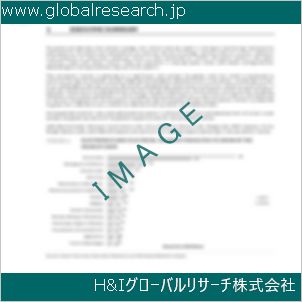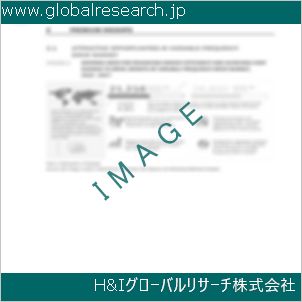Table of Contents
1 Industry Overview of Dimer, Parylene F
1.1 Definition and Specifications of Dimer, Parylene F
1.1.1 Definition of Dimer, Parylene F
1.1.2 Specifications of Dimer, Parylene F
1.2 Classification of Dimer, Parylene F
1.3 Applications of Dimer, Parylene F
1.3.1 Nuclear Application
1.3.2 Non-Nuclear Application
1.4 Industry Chain Structure of Dimer, Parylene F
1.5 Industry Overview and Major Regions Status of Dimer, Parylene F
1.5.1 Industry Overview of Dimer, Parylene F
1.5.2 Global Major Regions Status of Dimer, Parylene F
1.6 Industry Policy Analysis of Dimer, Parylene F
1.7 Industry News Analysis of Dimer, Parylene F
2 Manufacturing Cost Structure Analysis of Dimer, Parylene F
2.1 Raw Material Suppliers and Price Analysis of Dimer, Parylene F
2.2 Equipment Suppliers and Price Analysis of Dimer, Parylene F
2.3 Labor Cost Analysis of Dimer, Parylene F
2.4 Other Costs Analysis of Dimer, Parylene F
2.5 Manufacturing Cost Structure Analysis of Dimer, Parylene F
2.6 Manufacturing Process Analysis of Dimer, Parylene F
3 Technical Data and Manufacturing Plants Analysis of Dimer, Parylene F
3.1 Capacity and Commercial Production Date of Global Dimer, Parylene F Major Manufacturers in 2023
3.2 Manufacturing Plants Distribution of Global Dimer, Parylene F Major Manufacturers in 2023
3.3 R&D Status and Technology Source of Global Dimer, Parylene F Major Manufacturers in 2023
3.4 Raw Materials Sources Analysis of Global Dimer, Parylene F Major Manufacturers in 2023
4 Capacity, Production and Revenue Analysis of Dimer, Parylene F by Regions, Types and Manufacturers
4.1 Global Capacity, Production and Revenue of Dimer, Parylene F by Regions 2019-2024
4.2 Global and Major Regions Capacity, Production, Revenue and Growth Rate of Dimer, Parylene F 2019-2024
4.3 Global Capacity, Production and Revenue of Dimer, Parylene F by Types 2019-2024
4.4 Global Capacity, Production and Revenue of Dimer, Parylene F by Manufacturers 2019-2024
5 Price, Cost, Gross and Gross Margin Analysis of Dimer, Parylene F by Regions, Types and Manufacturers
5.1 Price, Cost, Gross and Gross Margin Analysis of Dimer, Parylene F by Regions 2019-2024
5.2 Price, Cost, Gross and Gross Margin Analysis of Dimer, Parylene F by Types 2019-2024
5.3 Price, Cost, Gross and Gross Margin Analysis of Dimer, Parylene F by Manufacturers 2019-2024
6 Consumption Volume, Consumption Value and Sale Price Analysis of Dimer, Parylene F by Regions, Types and Applications
6.1 Global Consumption Volume and Consumption Value of Dimer, Parylene F by Regions 2019-2024
6.2 Global and Major Regions Consumption Volume, Consumption Value and Growth Rate of Dimer, Parylene F 2019-2024
6.3 Global Consumption Volume and Consumption Value of Dimer, Parylene F by Types 2019-2024
6.4 Global Consumption Volume and Consumption Value of Dimer, Parylene F by Applications 2019-2024
6.5 Sale Price of Dimer, Parylene F by Regions 2019-2024
6.6 Sale Price of Dimer, Parylene F by Types 2019-2024
6.7 Sale Price of Dimer, Parylene F by Applications 2019-2024
6.8 Market Share Analysis of Dimer, Parylene F by Different Sale Price Levels
7 Supply, Import, Export and Consumption Analysis of Dimer, Parylene F
7.1 Supply, Consumption and Gap of Dimer, Parylene F 2019-2024
7.2 Global Capacity, Production, Price, Cost, Revenue, Supply, Import, Export and Consumption of Dimer, Parylene F 2019-2024
7.3 USA Capacity, Production, Price, Cost, Revenue, Supply, Import, Export and Consumption of Dimer, Parylene F 2019-2024
7.4 EU Capacity, Production, Price, Cost, Revenue, Supply, Import, Export and Consumption of Dimer, Parylene F 2019-2024
7.5 China Capacity, Production, Price, Cost, Revenue, Supply, Import, Export and Consumption of Dimer, Parylene F 2019-2024
7.6 Japan Capacity, Production, Price, Cost, Revenue, Supply, Import, Export and Consumption of Dimer, Parylene F 2019-2024
8 Major Manufacturers Analysis of Dimer, Parylene F
8.1 Manufacturer One
8.1.1 Company Profile
8.1.2 Product Picture and Specifications
8.1.2.1 Type I
8.1.2.2 Type II
8.1.2.3 Type III
8.1.3 Capacity, Production, Price, Cost, Gross and Revenue
8.1.4 Contact Information
8.2 Manufacturer Two
8.2.1 Company Profile
8.2.2 Product Picture and Specifications
8.2.2.1 Type I
8.2.2.2 Type II
8.2.2.3 Type III
8.2.3 Capacity, Production, Price, Cost, Gross and Revenue
8.2.4 Contact Information
8.3 Manufacturer Three
8.3.1 Company Profile
8.3.2 Product Picture and Specifications
8.3.2.1 Type I
8.3.2.2 Type II
8.3.2.3 Type III
8.3.3 Capacity, Production, Price, Cost, Gross and Revenue
8.3.4 Contact Information
8.4 Manufacturer Four
8.4.1 Company Profile
8.4.2 Product Picture and Specifications
8.4.2.1 Type I
8.4.2.2 Type II
8.4.2.3 Type III
8.4.3 Capacity, Production, Price, Cost, Gross and Revenue
8.4.4 Contact Information
8.5 Manufacturer Five
8.5.1 Company Profile
8.5.2 Product Picture and Specifications
8.5.2.1 Type I
8.5.2.2 Type II
8.5.2.3 Type III
8.5.3 Capacity, Production, Price, Cost, Gross and Revenue
8.5.4 Contact Information
…
9 Marketing Trader or Distributor Analysis of Dimer, Parylene F
9.1 Marketing Channels Status of Dimer, Parylene F
9.2 Traders or Distributors with Contact Information of Dimer, Parylene F by Regions
9.3 Ex-work Price, Channel Price and End Buyer Price Analysis of Dimer, Parylene F
9.4 Regional Import, Export and Trade Analysis of Dimer, Parylene F
10 Industry Chain Analysis of Dimer, Parylene F
10.1 Upstream Major Raw Materials Suppliers Analysis of Dimer, Parylene F
10.1.1 Major Raw Materials Suppliers with Contact Information Analysis of Dimer, Parylene F
10.1.2 Major Raw Materials Suppliers with Supply Volume Analysis of Dimer, Parylene F by Regions
10.2 Upstream Major Equipment Suppliers Analysis of Dimer, Parylene F
10.2.1 Major Equipment Suppliers with Contact Information Analysis of Dimer, Parylene F
10.2.2 Major Equipment Suppliers with Product Pictures Analysis of Dimer, Parylene F by Regions
10.3 Downstream Major Consumers Analysis of Dimer, Parylene F
10.3.1 Major Consumers with Contact Information Analysis of Dimer, Parylene F
10.3.2 Major Consumers with Consumption Volume Analysis of Dimer, Parylene F by Regions
10.4 Supply Chain Relationship Analysis of Dimer, Parylene F
11 Development Trend of Analysis of Dimer, Parylene F
11.1 Capacity, Production and Revenue Forecast of Dimer, Parylene F by Regions and Types
11.1.1 Global Capacity, Production and Revenue of Dimer, Parylene F by Regions 2024-2029
11.1.2 Global and Major Regions Capacity, Production, Revenue and Growth Rate of Dimer, Parylene F 2024-2029
11.1.3 Global Capacity, Production and Revenue of Dimer, Parylene F by Types 2024-2029
11.2 Consumption Volume and Consumption Value Forecast of Dimer, Parylene F by Regions, Types and Applications
11.2.1 Global Consumption Volume and Consumption Value of Dimer, Parylene F by Regions 2024-2029
11.2.2 Global and Major Regions Consumption Volume, Consumption Value and Growth Rate of Dimer, Parylene F 2024-2029
11.2.3 Global Consumption Volume and Consumption Value of Dimer, Parylene F by Types 2024-2029
11.2.4 Global Consumption Volume and Consumption Value of Dimer, Parylene F by Applications 2024-2029
11.3 Supply, Import, Export and Consumption Forecast of Dimer, Parylene F
11.3.1 Supply, Consumption and Gap of Dimer, Parylene F 2024-2029
11.3.2 Global Capacity, Production, Price, Cost, Revenue, Supply, Import, Export and Consumption of Dimer, Parylene F 2024-2029
11.3.3 USA Capacity, Production, Price, Cost, Revenue, Supply, Import, Export and Consumption of Dimer, Parylene F 2024-2029
11.3.4 EU Capacity, Production, Price, Cost, Revenue, Supply, Import, Export and Consumption of Dimer, Parylene F 2024-2029
11.3.5 China Capacity, Production, Price, Cost, Revenue, Supply, Import, Export and Consumption of Dimer, Parylene F 2024-2029
11.3.6 Japan Capacity, Production, Price, Cost, Revenue, Supply, Import, Export and Consumption of Dimer, Parylene F 2024-2029
12 New Project Investment Feasibility Analysis of Dimer, Parylene F
12.1 New Project SWOT Analysis of Dimer, Parylene F
12.2 New Project Investment Feasibility Analysis of Dimer, Parylene F
13 Conclusion of the Global Dimer, Parylene F (CAS 1785-64-4) Industry 2024 Market Research Report
| ※参考情報 パリレンF二量体(Parylene F)は、フッ素化ポリマーであり、その特異な物性から多くの産業で利用されています。化学的には、パリレンFは特定の分子構造を持ち、CAS番号は1785-64-4で識別されます。この材料は、特にその耐熱性や耐薬品性、低摩擦係数といった特性から、様々な応用が期待されているのです。 まず、パリレンFの定義について触れてみましょう。パリレンとは、ポリ(パラ-メチレン)を基にした高分子材料で、基本的には二量体が重合して形成されます。パリレンFは、その中でフッ素原子が多く含まれるバリエーションであり、フッ素の特性を活かした機能を持っています。このフッ素化により、優れた耐熱性、耐溶剤性を実現し、多環式化合物とも反応しづらいという特長があります。そのため、パリレンFは厳しい環境下でも安定しているため、特定の用途において非常に好まれる材料です。 次に、パリレンFの特徴について考えてみましょう。この素材は、まずその耐久性と耐薬品性において他の多くのポリマーと比べても際立っています。また、フッ素の疎水性により、表面が滑らかであり、摩擦が少なく、非粘着性を持つため、洗浄が容易です。さらに、電気絶縁性にも優れており、高電圧がかかる環境でも使用できます。このため、電子部品の保護コーティングとしても利用されます。 次に、パリレンFの種類について説明します。パリレンFにはいくつかのバリエーションがあり、フッ素含量や化学構造の違いによって性質が異なりますが、基本的な特性は同様です。一般的には、パリレンFはその化学的安定性が高く、熱的抵抗も優れているため、特に高温環境や腐食性のある環境でも安定して機能します。これは、航空宇宙産業や医療機器、半導体製造などの厳しい条件下でも活用される理由となっています。 次に、パリレンFの用途について考えてみましょう。パリレンFは、医療機器や電子部品のコーティングに広く用いられています。特に医療分野では、インプラントやカテーテルの表面を覆うことで、生体適合性とともに耐久性を向上させ、感染のリスクを低減する役割を果たすことができます。また、電子機器においては、防水性や防塵性とともに、絶縁体としての役割も果たします。これにより、長期間の使用が可能となり、信号劣化のリスクも低く抑えることができるのです。 さらに、パリレンFに関連する技術についても触れておくべきでしょう。パリレンFのコーティングプロセスは、一般的に真空蒸着法を用いることが多いです。この方法では、低温でのデポジットが可能で、基材に対して均一なコーティングが施されます。真空の環境下で寸法精度が高く、微細な構造のコーティングができるため、ナノテクノロジーやフィルム状デバイスの製造にも応用することが可能です。 このように、パリレンF二量体は、その特異な特性から様々な分野で利用されており、今後も新たな応用が期待されている材料です。材料科学の発展とともに、パリレンFの特性がさらに引き出され、多様な産業へと展開していくことでしょう。また、環境保護の観点からも、耐久性の高い材料の利用促進は、持続可能な社会の実現に寄与することが期待されています。今後の研究や技術の進展により、パリレンF二量体のさらなる可能性が広がることが期待されているのです。 |
❖ 免責事項 ❖
http://www.globalresearch.jp/disclaimer












